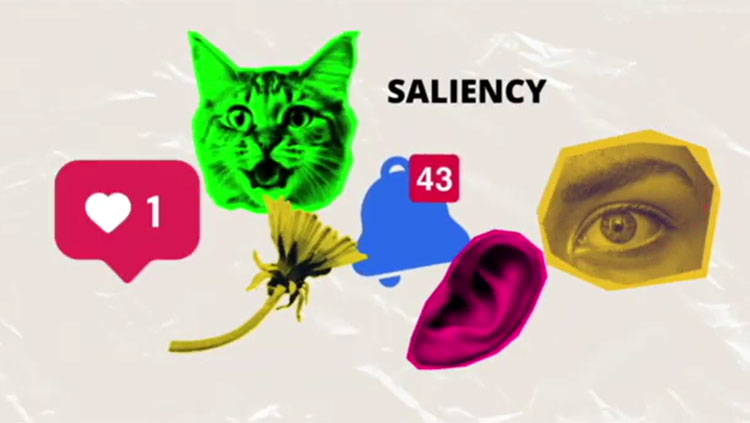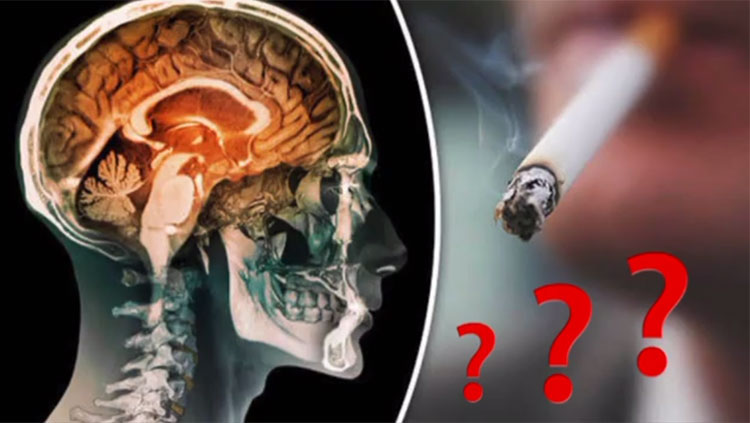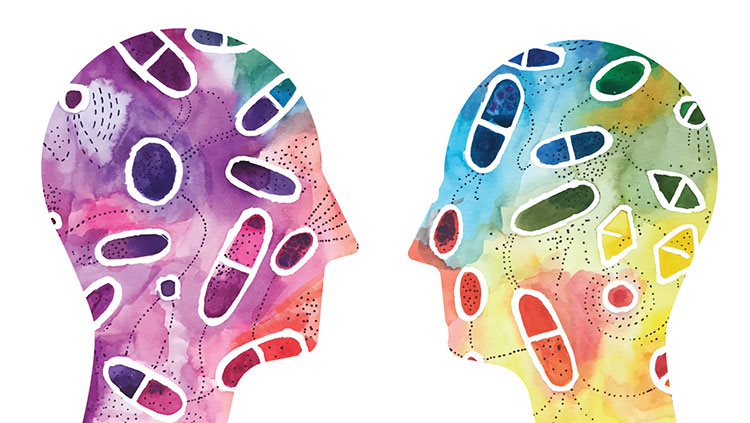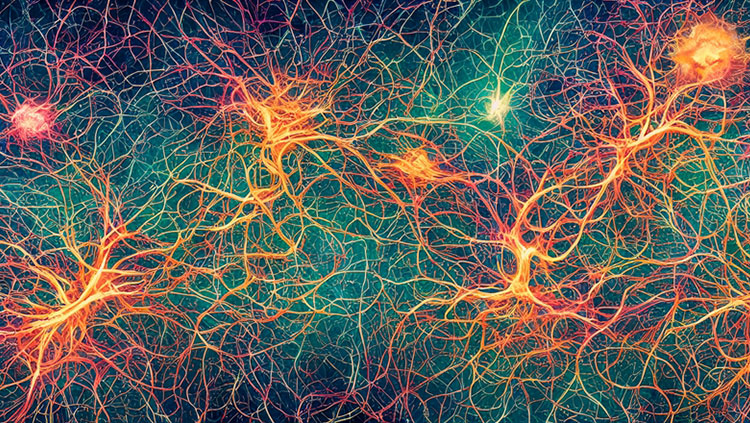NIH Aims to Expand Addiction Research Strategies Beyond Just Biology
- Published23 Jul 2024
- Author RJ Mackenzie
- Source BrainFacts/SfN

Genetics and environment influence brain health outcomes, and so do social disparities. Inequality impacts health and makes it more difficult for ethnic and racial minority groups to access and receive quality treatment. In November at Neuroscience 2023, the annual meeting of the Society for Neuroscience, a panel of National Institutes of Health (NIH) leaders spoke about disparities in healthcare, and how they hope to address inequality in addiction treatment and mental healthcare through research practices.
Richard Benson, director of the Office of Global Health and Health Disparities at the National Institute of Neurological Disorders and Stroke (NINDS), said that historically, the NIH has focused on the biological component of disease. This has meant that research into environmental factors has not received the funding it needs. Benson summed up the institutes’ new research direction as going “beyond the biologic”. This means studying how racism, ableism, poverty, and other societal factors impact brain health, while improving NIH’s own practices so that they can conduct this research effectively.
Addressing the Social Causes of Addiction
Drug addiction is a major mental health issue in the United States where drug overdose has claimed over 100,000 lives in 2022, said Nora Volkow, director of the National Institute on Drug Abuse (NIDA). Overdose affects Alaska Native and American Indian communities the most.
Volkow said that past scientific practices have made it difficult for communities to trust in new initiatives. But signs of progress are being made. Beginning in 2020, NIH’s HEALing Communities Study aims to help addiction-affected communities engage in the research process. The project has funded work in 67 communities affected by the opioid crisis. The project unites leaders from local healthcare and justice settings to map out interventions that will help each community. An overarching goal of the project is to reduce opioid-linked overdose deaths by 40% over three years. Volkow said that considering social factors, such as whether poverty in the community was rural or urban, has been essential to the study.
Volkow also highlighted studies exploring how biology and inequality link together. NIH research has shown that infants exposed to opioids and alcohol in the womb show deficits in brain areas “necessary for self-regulation of emotional reactivity,” said Volkow. This link creates a cycle where discrimination and low income not only drive people to addiction, but also set their children up to be caught in the same trap. “Hopefully [the studies] can lead to policies that will support much fairer distribution of resources,” she added.
Racism’s Effect on the Brain
“The U.S. is facing a mental health crisis,” said Joshua Gordon, former director of the National Institute of Mental Health (NIMH). More than one in five Americans live with a mental illness. Minorities and people who live in underserved rural areas “bear a disproportionate burden from mental illness in the United States,” added Gordon. This can be a result of poverty. Low income and precarious housing can increase stress and depression. Gordon said NIH-funded research suggests “racism directly has impacts on mental health as well as indirectly through these other social determinants of health.”
The mechanisms by which this occurs are a hot topic of study, said Gordon. Small modifications to our DNA, called epigenetic marks, happen throughout our lives. Some of these marks appeared to mediate the link between experiences of racism and poor mental health, said Gordon. He added that this research is still at an early stage.
Changing Research Culture
The panel said that to pursue these research aims more effectively, the NIH also has to look at how its funding model maintains systems of inequality. The NIH awarded nearly 30,000 research grants to white principal investigators in 2022. Just 1,352 grants went to Black or African American principal investigators. Gordon said that the NIMH has promoted funding for research that investigators from minority backgrounds want to pursue. This has had encouraging results. “We’ve in the last two years doubled the number of investigators who are Black or African American who are applying to our grants,” he added.
Volkow said that social changes, such as creating a more inclusive culture within research, can also help. NIDA has released a guide explaining how to use respectful language when talking about addiction. The use of terms like “person with substance use disorder” rather than “addict” moves the target of the intervention from patient to disease. These changes are starting at the very top — NIDA plans to change its name to the National Institute of Diseases of Addiction as part of this process.
NIH funding could do much to reduce medical inequality if combined with changes to NIH’s culture and practices. The goal, said the panel, should be to build the NIH into an organization that can help all Americans. Volkow said that basic biomedical research still has an essential role. “The most consequential intervention that will help us change the stigma against addiction is developing treatments that show that you can actually recover because then people will stop actually looking at addiction as a moral failure,” she said.
CONTENT PROVIDED BY
BrainFacts/SfN
References
Aroke, E. N., Joseph, P. V., Roy, A., Overstreet, D. S., Tollefsbol, T. O., Vance, D. E., & Goodin, B. R. (2019). Could epigenetics help explain racial disparities in chronic pain? Journal of Pain Research, 12, 701–710. https://doi.org/10.2147/JPR.S191848
Beauchamp, K. G., Lowe, J., Schrader, R. M., Shrestha, S., Aragón, C., Moss, N., Stephen, J. M., & Bakhireva, L. N. (2020). Self-regulation and emotional reactivity in infants with prenatal exposure to opioids and alcohol. Early Human Development, 148, 105119. https://doi.org/10.1016/j.earlhumdev.2020.105119
Qeadan, F., Madden, E. F., Mensah, N. A., Tingey, B., Herron, J., Hernandez-Vallant, A., Venner, K. L., English, K., & Dixit, A. (2022). Epidemiological trends in opioid-only and opioid/polysubstance-related death rates among American Indian/Alaska Native populations from 1999 to 2019: A retrospective longitudinal ecological study. BMJ Open, 12(5), e053686. https://doi.org/10.1136/bmjopen-2021-053686
What to Read Next
Also In Addiction
Trending
Popular articles on BrainFacts.org



















